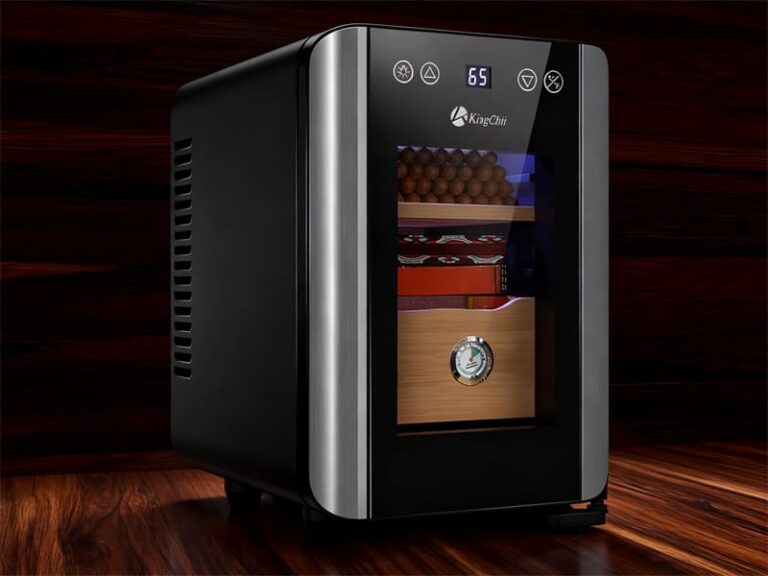How Long Do Cigars Last in a Humidor
Let’s cut right to the chase. If you treat your humidor right—getting that seasoning perfect and locking in the humidity and temp—you’re not talking about months, you’re talking about years. Seriously, a good stash can easily last five years. I’ve got buddies like Reid who are smoking sticks they’ve aged for over a decade. It’s wild. And we’re not just talking about surviving; premium cigars truly transform, getting smoother and way more complex over time.
Cigar Aging
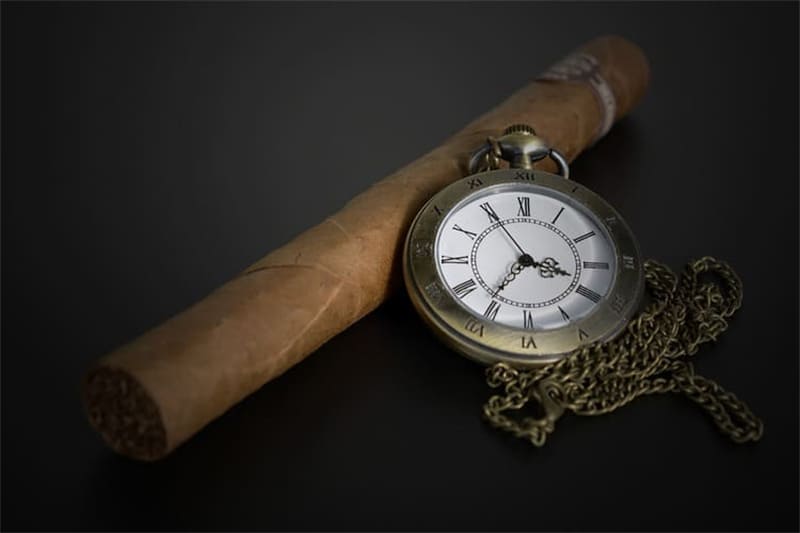
It’s funny, my friend Nolan always compares cigars to his fancy wine collection, and he’s not wrong. They get better with time. That whole aging journey actually starts before the cigar is even a cigar. The big-name brands let those tobacco leaves just chill and mature for ages. This whole process is what smooths out the rough edges. Even after they’re rolled, a lot of makers let them rest again. That’s what helps all the different oils from the filler, binder, and wrapper (you know, the holy trinity) get to know each other and create one, killer, unified flavor. Then, guys like us get our hands on them and start the real fun: “box aging,” where we stash them away for years, waiting for that magic to happen.
Hands down, the best way to see what aging actually does is to play scientist. Go buy a 5-pack of something you already like—maybe a Padron 1926 Series, which is a total beast for this. Smoke one of ’em right out of the gate. Toss the other four into your humidor (once it’s stable, of course). Then, set some reminders. Smoke the next one in a month. The third one at three months. Then six months, and the last one on its one-year anniversary. You have to take notes. I mean it. Write down what you taste, how strong it is, the whole nine yards. When you compare those notes after a year, I promise, you’ll be blown away by the changes.
So yeah, if you’re playing the long game, a premium cigar can absolutely age for a decade, maybe more, as long as you provide that rock-solid environment. Now, everyone throws around the “70/70 rule” (70 degrees, 70% humidity). And that’s fine. But I gotta be real: I run my collection a little cooler. I aim for that 65-68% humidity range and keep the temp right around 65°F. Why? Because consistency is king. Fluctuations are the enemy. A slightly lower, more stable level is, in my book, way safer than chasing a “perfect” 70/70 that’s always bouncing around.
Proper Cigar Storage
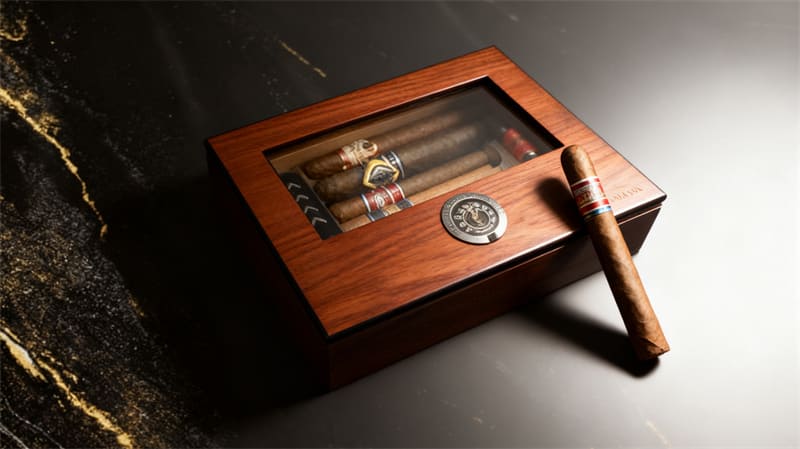
Look, if you’re serious about your cigars, you need a proper humidor. End of story. There’s a reason pretty much every good humidor—and even the boxes your sticks come in—is lined with Spanish cedar. It’s not just for looks. That wood is legit. It doesn’t have any sappy-resiny junk that can mess with your cigar’s flavor. Plus, it’s amazing at managing humidity, and that killer aroma it has? Tobacco beetles hate it, which is a major win for us.
If you’re shopping for a new setup, think about what fits your life. My buddy Wesley has one of those fancy electric humidors with a built-in fan, and I’m super jealous. It circulates the air so everything is perfectly even. If you have a classic desktop box like mine, you’ve just got to be a little more hands-on. I make it a point to open the lid for a few minutes every couple of weeks just to let the air exchange and keep things fresh.
No matter what kind you get, it has to have three things: a seal that closes up tight (like, really tight), some kind of humidification system, and a hygrometer you can trust. And when you’re filling that system, don’t cheap out. Use only distilled water, a proper propylene glycol solution, or—my personal favorite—just toss in the right Boveda packs. It’s a no-brainer. Also, set a calendar alert to check your hygrometer’s calibration every three months. A bad reading can wreck your whole collection.
This isn’t a “set it and forget it” hobby. You’ve got to check in. Keep an eye on your humidity source and refill it when needed. Make sure the temperature isn’t all over the place. And this is a big one: rotate your cigars. My wife, Maren, thinks I’m crazy when she sees me playing “musical cigars,” but it’s crucial. The sticks on the bottom shelf, right near the humidifier, will get soaked if you just leave them. I move the bottom ones to the top and the top to the bottom every month or so. It ensures everyone gets the same amount of love.
A couple more pro-tips. Try to keep your cigars separated, either by brand or at least by their flavor profile. If you toss a super-peppery Nicaraguan stick right next to a mild Dominican, their flavors are going to “marry,” and not in a good way. They’ll both end up tasting… weird. Also, don’t stuff your humidor like a Thanksgiving turkey. You need air to circulate. I always try to leave at least 25% of the space empty. Give ’em room to breathe!
Seasoning a Humidor
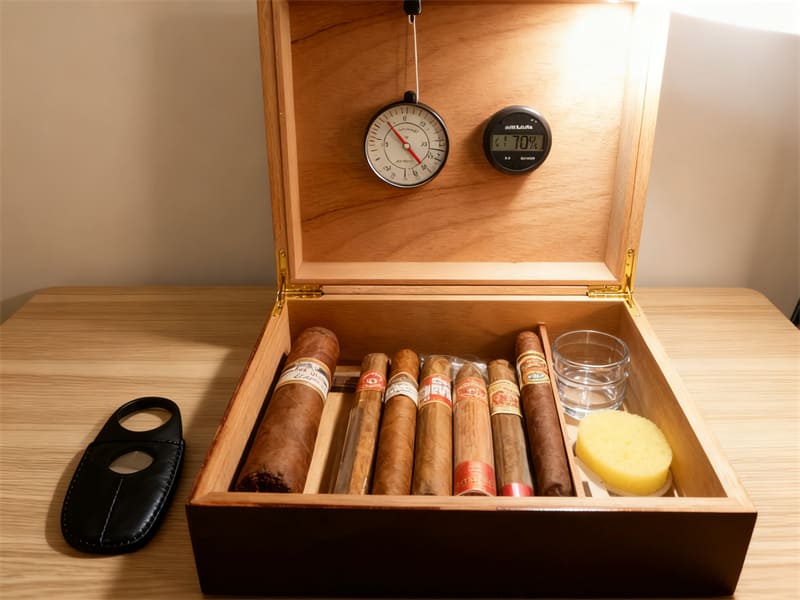
I’m gonna say this loud: You cannot skip seasoning your new humidor. I don’t care how excited you are. If you throw your cigars into that dry box, the wood is going to act like a sponge and suck every last bit of moisture right out of them. It’s the fastest way to ruin your cigars. Seasoning also preps the wood so it doesn’t warp or crack when the humidity hits it. I’m not kidding, this is probably the single most important thing you’ll do for your collection.
First, make sure your hygrometer is calibrated so you know you can trust it. Then, grab your supplies: a bowl of distilled water (or PG solution), a brand new kitchen sponge (no soap!), a small plastic bag, and some paper towels. Soak the sponge, wring it out just enough so it’s not dripping, and place it on top of the plastic bag inside the humidor. Now, get your humidifier element. Soak that in the distilled water, too. Once it’s saturated, let it sit on paper towels for a good 30 minutes to drain any excess. Put the humidifier and your hygrometer inside the box. If you have wooden trays or dividers, put them in now so they get seasoned too. Close the lid. Don’t open it for at least two days.
After those two days, you’re gonna re-soak that sponge and put it back in for another 24 hours. Now, when you check the hygrometer at this point, do not freak out if it reads something crazy like 80% or 85%. That’s totally normal. You’re super-saturating the wood. Once that last 24 hours is up, take the sponge and bag out. The humidity should settle down to around 70-72% over the next day. Now… now you can put your cigars in.
It’s really worth it to invest in a quality humidor that fits your needs. Be honest with yourself about your collection. Don’t buy a tiny 50-count box if you know you’re a “buy-by-the-box” kind of person. Whether you just need a small travel case, a classic desktop model, or you’re a fanatic like Desmond who’s building a full walk-in closet, get the one that matches your habit.
Check Up Regularly
Just because your cigars are in the box doesn’t mean the job is done. Making regular checks is the only way to know for sure that your humidor is doing its job and your sticks are being kept in prime condition.
Keep an eye on those humidity and temperature levels. Give your cigars a once-over to check for any plume (which is good) or mold (which is very, very bad). The best check? The “pinch test.” Gently squeeze one of your cigars between your thumb and forefinger. It should have just a little bit of give—a slight springiness. If it feels too soft and spongy, your humidity is too high. If it feels stiff and hard, it’s too dry. It’s a simple, tactile way to know exactly what’s going on.

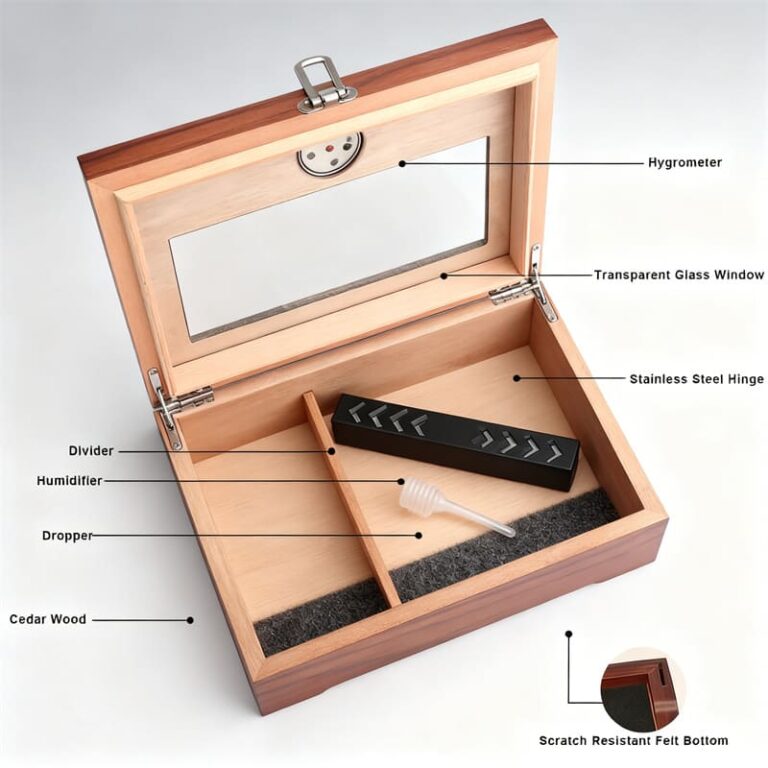
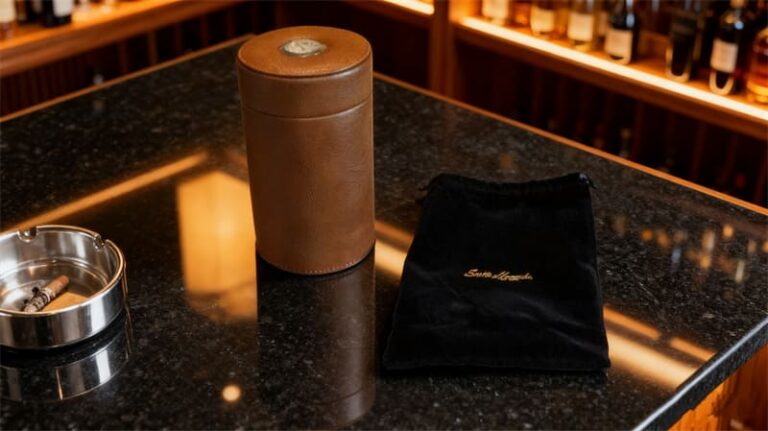

![NewAir CC-300H Humidor Review [No Bias] 7 NewAir CC-300H Humidor Review](https://smokedock.com/wp-content/uploads/2025/11/NewAir-CC-300H-Humidor-Review1-768x431.jpg)

